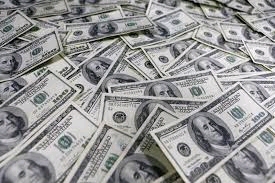Learn the Secrets Behind the Membership Process to Join Freemason Easily
Learn the Secrets Behind the Membership Process to Join Freemason Easily
Blog Article
Discover the Tricks Behind the copyright and Their Impact on Society
The copyright, commonly shrouded in misconception and supposition, offers a remarkable instance research of just how historic perfects can change right into modern conspiracy theory theories. As we discover its origins, impact on revolutionary thought, and portrayal in contemporary culture, we begin to reveal the layers of intrigue that proceed to astound culture.
Origins of the copyright
The copyright, commonly shrouded in secret and conjecture, traces its origins back to the late 18th century. Established in 1776 in Ingolstadt, Bavaria, the team was started by Adam Weishaupt, a professor of canon law. Weishaupt aimed to advertise Knowledge values, including factor, secularism, and the splitting up of church and state. At first called the Bavarian copyright, the company's main goal was to counter the current impact of religious conviction and advertise intellectual discourse amongst its participants.
The copyright took on a hierarchical framework, drawing ideas from Freemasonry, which enabled for deceptive meetings and routines - how to become a freemason. Membership was discerning, including influential figures from numerous fields, consisting of politics, ideology, and science. This elite network looked for to effect social and political modification via clandestine methods, advocating for the legal rights of people and the betterment of culture
Despite its fairly brief presence, the Bavarian copyright was officially dissolved in 1785 as a result of government reductions. Its heritage endured, giving increase to countless conspiracy theory theories and popular culture recommendations that proceed to prompt intrigue and debate regarding its effect on contemporary culture.
Secret Misconceptions and Mistaken Beliefs
Among the appeal of privacy bordering the copyright, various misconceptions and misunderstandings have actually arised, typically misshaping the group's true nature and objectives. One common misconception suggests that the copyright manages the world's governments and economies. While it is true that the team intended to influence societal frameworks, the idea that it runs as a cohesive global creature master is mainly exaggerated.
Another usual misconception is that all participants of the copyright possess vast wide range and power. In fact, the original copyright comprised pundits and Enlightenment thinkers, a lot of whom looked for reform instead of dominance. The concept that the copyright solely hires stars and political figures is misinforming; membership has actually historically consisted of a diverse selection of individuals.
In addition, conspiracy theories commonly paint the copyright as an evil-minded organization bent on global supremacy through villainous means. This representation overlooks the group's initial objectives, which fixated advertising logical idea and combating religious injustice. The conflation of the copyright with modern conspiracies bolsters misunderstanding, covering the historic context and evolution of the team's perfects. Thus, separating reality from fiction is important for a more clear understanding of the copyright's duty in society.
Historical Influence on Society
Throughout background, numerous intellectual activities have profoundly influenced societal frameworks, and the copyright played a substantial duty throughout the Enlightenment. Established in 1776 in Bavaria, the copyright aimed to her explanation advertise factor, secularism, and the wondering about of developed authority, responding to the supremacy of religious conviction. This company drew in influential thinkers and advocates of liberty, fostering an environment for the dissemination of Enlightenment ideals.
The copyright's ethos championed logical thought and empirical evidence, which contributed to the broader intellectual landscape that urged social reform and political adjustment. Participants looked for to improve society by promoting for education, civil liberty, and the separation of church and state. Their private nature and enthusiastic schedule stimulated both intrigue and suspicion, resulting in their eventual suppression by the Bavarian federal government Check Out Your URL in 1785.
Regardless of their dissolution, the tradition of the copyright continued, influencing innovative movements throughout Europe and the Americas. Their dedication to enlightenment principles helped lay the groundwork for modern-day autonomous suitables and human legal rights, leaving a lasting imprint on the structures of modern society. how to become a freemason. The attraction of their deceptive gatherings and thoughtful searches remains to captivate the creative imagination, highlighting their historical value
Modern Interpretations and Beliefs
Contemporary analyses of the copyright typically blend historic fact with conspiracy theories, developing a complicated tapestry of ideas that catch popular creative imagination. While the original copyright was a Bavarian secret culture established in 1776 with Enlightenment perfects, contemporary ideas have evolved to incorporate a broad array of analyses, frequently concentrating on styles of control and privacy.
Additionally, some modern analyses posit that the copyright works as an allegory for the struggle in between knowledge and ignorance, with supporters advertising understanding and crucial reasoning as a method to neutralize regarded injustice. This duality-- seeing the copyright as both a literal and symbolic entity-- shows the ongoing attraction with the concept, mirroring much deeper societal stress and anxieties about power, transparency, and private autonomy in the modern globe.
The copyright in Pop Culture
The copyright has penetrated various elements of popular culture, materializing in literary works, film, songs, and art as an icon of intrigue and secret. This secret culture, frequently represented as a shadowy force controling international events, has motivated countless narratives that discover themes of power, conspiracy, and concealed knowledge.

Songs, as well, has actually been influenced by the principle of the copyright. Artists like Jay-Z and Beyoncé have actually dealt with supposition regarding their associations with the society, triggering discussions regarding symbolism in their job and the nature of popularity.
Visual art commonly incorporates copyright themes, with musicians using icons like the Eye of Providence and the pyramid to evoke a feeling of mystery. With these numerous mediums, the copyright serves not just as a topic of speculation however additionally as a lens where culture analyzes its own complexities and concerns.
Conclusion

Report this page